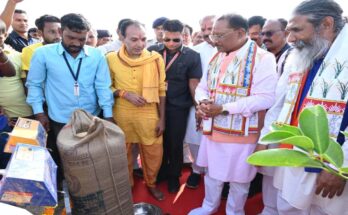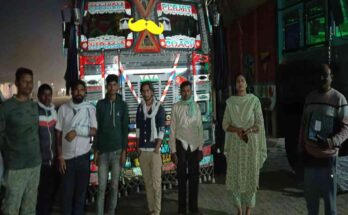Pune : August 19, 2020. Several efforts are put into understanding the medical cause of death. But for Peter Byass – former director at Umea Centre for Global Health Research at Northern Sweden – it became the focus of his research, which led the Centre to being recognised as the World Health Organisation Collaborating Centre for Verbal Autopsy. The professor, who liked to measure health in meaningful ways and strongly promoted computer coded interpretation of verbal autopsy, passed away from cardiac arrest at his home in London on August 16.
Scientists have expressed sadness over his untimely demise, saying he was extremely concerned about health data in low and middle income countries and had contributed to Lancet Countdown global health report. Scientists said he had great affinity for India and had mentored several PhD scholars here.
The loss is particularly felt at KEM Hospital and Research Centre in Pune, where Byass mentored several scientists for their PhD work at Umea University in Sweden.
Dr Sanjay Juvekar, head of the Vadu Rural Health Programme, told The Indian Express, “I lost a good friend, and it is acutely felt among the world community of scientists working in the field of cause of death assessment using verbal autopsy.”
“Peter was passionate about using verbal autopsy tools across low and middle-income countries and he wanted it to be a tool based on machine learning as there is a scarcity of doctors,” Juvekar said.
Dr Vijendra Ingole, an environmental epidemiologist who was involved with the Vadu Rural Health Programme and is now at the ISGlobal Barcelona Institute for Global Health in Spain, said Byass was his PhD mentor. “He meant a lot to all of us. More than academics, professor Byass supported me in my PhD fellowship at Umea and Vadu,” Ingole recalled.
In Verbal Autopsy (VA), people who were present at someone’s death are interviewed to get more information and determine the cause of death. The InterVA suite of probabilistic models for reliably determining causes of death without needing the doctors’ time and expertise was developed by the Umea group. This meant that cause-specific mortality data could be made available much more quickly and cheaply and the work involved considerable global collaboration, not only with WHO but also with IN DEPTH – a network of 55 health and demographic surveillance system sites across Asia and Africa.
Scientists recall how passionate Byass was in trying to interpret verbal autopsy interviews reliably and consistently to arrive at the cause of death. Dr Anand Krishnan, professor, Centre for Community Medicine, AIIMS, New Delhi, who is the principal investigator of the Mortality in India established through Verbal Autopsies (MINErVA) project, said Byass had popularised verbal autopsy.
“He was a strong proponent of computer coded verbal autopsy. Several African countries face a problem of shortage of physicians and this technology was useful there. Similarly, Byass was enthusiastic about the increasing use of technology in India and whether this would be suitable in our country,” Krishnan told The Indian Express.
Byass had visited Pune when he was the chair of the scientific advisory committee (SAC) of IN DEPTH (2009-11). “I was a member then of SAC and we had several interactions,” recalled Tathagata Bhattacharjee, now data analyst with the London School of Hygiene and Tropical Medicine. “His focus was on verbal autopsy. He standardised data so that it can be interpreted,” Bhattacharjee said.
His Twitter profile describes him as a professor of global health and a human being who cares about health data in low and middle income countries.




